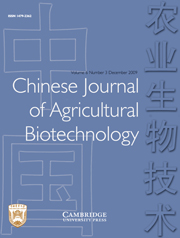No CrossRef data available.
Article contents
Factors influencing the efficiency of isolation and culture of human embryonic germ cells
Published online by Cambridge University Press: 12 February 2007
Abstract
Embryonic germ (EG) cells are pluripotent cells derived from the primordial germ cells of gonads, gonadal ridges and mesenteries, and analogies of foetuses, with the ability to undergo both self-renewal and multiple differentiation. These cells can differentiate into derivatives of all three embryonic germ layers when transferred to an in vitro environment and have the ability to form any fully differentiated cell of the body. The present paper investigates some factors influencing the efficiency of isolation and culture of human EG cells, such as foetus age, culture serum, added cytokines and feeder cells. The results demonstrate that foetuses of 7–12 weeks are optimal for in vitro culture of human EG cells. The basic medium consisted of DMEM, 1×non-essential amino acids, 2 mM l-glutamine and 1 mM sodium pyruvate. Supplementation with 15% foetal bovine serum, 4 ng/ml human recombinant leukaemia inhibitory factor, 4 ng/ml basic fibroblast growth factor and 20 ng/ml stem cell factor clearly improved the efficiency of isolation and culture of human EG cells. Murine embryonic fibroblasts were better feeder cells than human embryonic fibroblasts, bovine embryonic fibroblasts or STO cell line.
- Type
- Research Article
- Information
- Copyright
- Copyright © China Agricultural University and Cambridge University Press 2004


